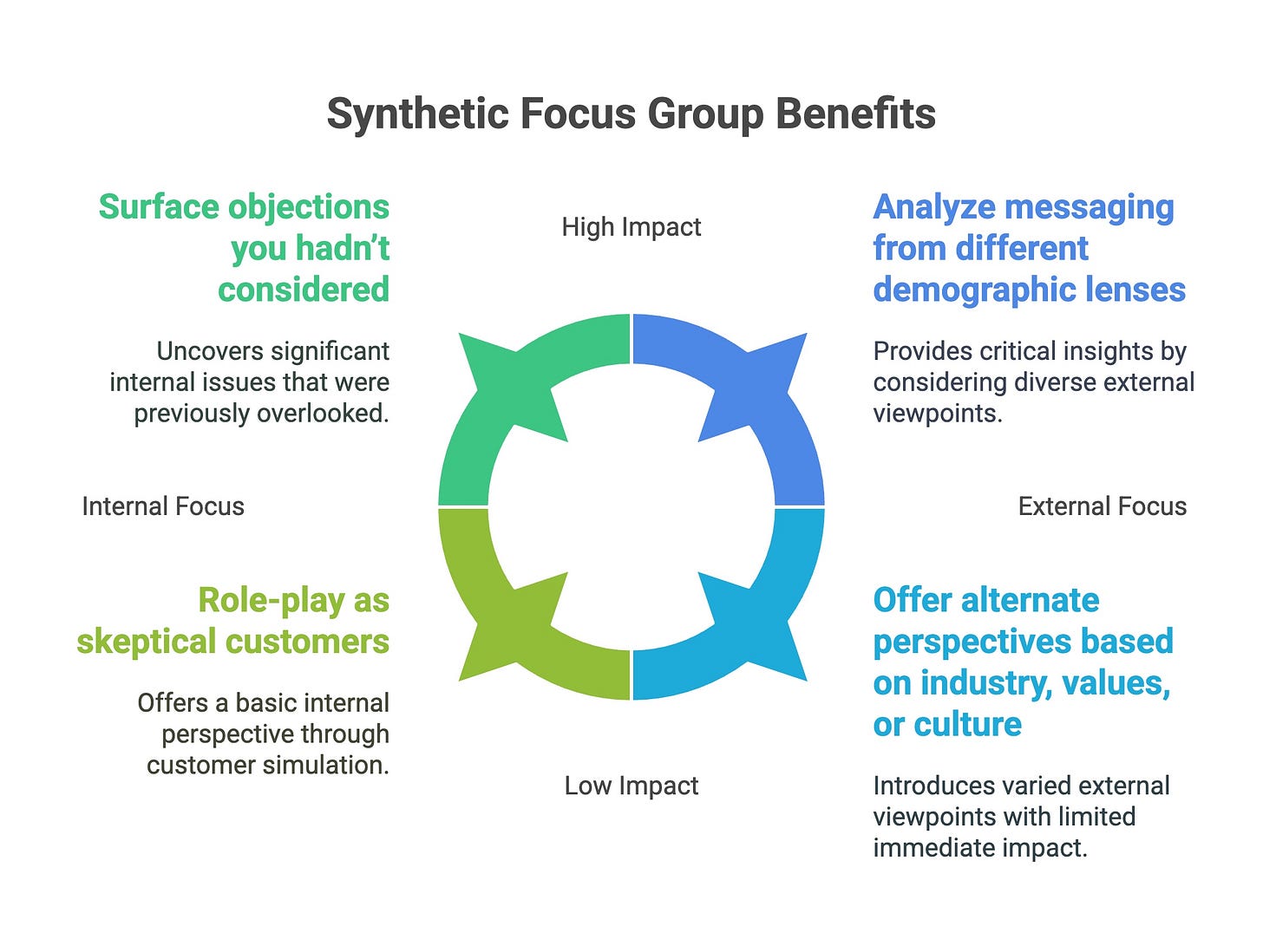What if you could interview 1,000 customers… in under 5 minutes?
Use AI to test ideas before you spend a dime
Let’s be honest: most marketers don’t have the time—or the budget—for traditional focus groups anymore.
And yet…
You still need answers to tough questions:
Will this headline resonate?
Does this positioning actually stand out?
What objections are people going to have?
In a perfect world, you'd gather a diverse group of your target customers, run a moderated session, analyze the recordings, and walk away with clarity.
But most of us? We don’t have 3 weeks and $15,000 for that.
That’s where AI-powered synthetic focus groups come in.
And no—this isn’t guesswork or a gimmick.
It’s a way to simulate feedback before you launch. To refine faster. To get out of your own echo chamber.
Here’s how to do it.
Why synthetic focus groups work
AI tools like ChatGPT, Claude, and Gemini can simulate different audience personas with stunning accuracy—if you feed them the right context.
AI-generated focus groups can:
Role-play as skeptical customers
Analyze messaging from different demographic lenses
Surface objections you hadn’t considered
Offer alternate perspectives based on industry, values, or culture
And because you control the inputs, you can test a range of ideas—at scale.
Start with this prompt:
Use this to simulate multiple reactions to your idea or marketing message.
Prompt:
Act as a synthetic focus group moderator for a [PRODUCT/SERVICE] that’s being marketed to [TARGET AUDIENCE]. Your job is to simulate a conversation among 5 diverse participants with varying personalities, goals, and objections.
The participants should include:
A highly skeptical user
An enthusiastic early adopter
A budget-conscious buyer
A competitor’s loyal customer
A confused or indifferent prospect
The topic they’re discussing is this:
"[INSERT HEADLINE, OFFER, OR VALUE PROP]"Please generate:
A simulated transcript of their discussion
Key takeaways from their feedback
Suggested edits or improvements to the messaging based on their objections
Tip: Run this multiple times using different headlines, taglines, or pitches. Compare reactions.
Prompt 2: Test positioning statements
You're an AI panel simulating ideal customers for a [TYPE OF BRAND]. Review the following three positioning statements for a new product launch.
Please:
Rank each statement on clarity, uniqueness, and emotional impact (1–10)
Explain WHY each statement worked or didn’t
Recommend which one to go with—or how to combine the best elements of all three
[INSERT POSITIONING STATEMENTS]
Prompt 3: Objection surfacing
You are simulating 10 responses from a target audience considering this product:
[INSERT PRODUCT OR OFFER]These participants represent varied personas (age, budget, goals, needs). Please list:
10 potential objections
The root cause behind each one
Suggestions to pre-emptively address these in marketing copy
Prompt 4: Competitive edge audit
You’re a simulated panel of 5 customers who currently use [TOP COMPETITOR].
Review the value proposition of this new product:
[INSERT YOUR VALUE PROP]Then answer:
Would you switch? Why or why not?
What would need to change to convince you?
What would instantly disqualify the offer?
What to do with the output
Use this feedback to:
Refine your messaging BEFORE the ad spend
Address objections in your FAQ or CTA
Identify gaps in your positioning or onboarding
Build confidence in internal team pitches and stakeholder reviews
And the best part? You didn’t need to book a research firm to do any of it.
Final thought
AI is here to help you understand your customers faster.
The marketers who move quickly and thoughtfully are the ones who set themselves up for success.
So before you launch your next campaign…
Ask your synthetic focus group first.






